

| 15mm Sicilian Normans Figures | AVAILABLE NOW! |

|
||
|
Immigrant Norman brigands first acclimatised themselves to the Italian Mezzogiorno as mercenaries in the service of Lombard and Byzantine factions and soon begun sending news back home about opportunities in the Mediterranean. These groups gathered in several places, establishing fiefdoms and states of their own, uniting and elevating their status to de facto independence within fifty years of their arrival. Although Norman mercenaries were fighting in Italy as early as 999, their first battle on their own account was Olivento in 1041 under Arduin, the Lombard lord of Melfi, against the Byzantines. The Norman conquest of southern Italy spanned most of the 11th and 12th centuries and culminated in the creation of the Kingdom of Sicily founded by Roger II in 1130. Unlike the Norman conquest of England (1066), which took a few years after only one decisive battle, the conquest of southern Italy was the product of many decades of bloody fighting and a great number of battles, few of which were decisive. Many territories were conquered independently, and only later were unified into a single state. Compared to the conquest of England it was unplanned and disorganised, but equally complete. This range has been sculpted by M. Campagna and currently cover most core troops but we plan to expand it even further very soon with the addition of yet more packs, including crossbowmen, Saracen and Berber troops. |
|
  Figures sculpted by M. Campagna Samples painted by Artur |
|
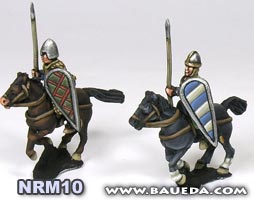 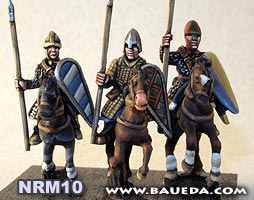 Figures sculpted by M. Campagna Samples painted by Ruben Torregrosa |
|
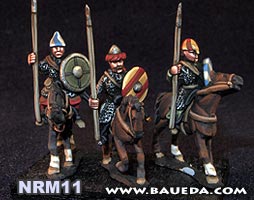 Figures sculpted by M. Campagna Samples painted by Ruben Torregrosa |
|
 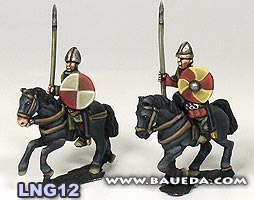 Figures sculpted by M. Campagna Samples painted by Ruben Torregrosa |
| Code:NRM7 15mm Norman Milites Charging with separate lance (Separate horse, riders and lances) Milites charging in the classical poses depicted on the Bayeux tapestry! Normally Normans would charge in a solid line with the horses as close to each other as possible and lance leveled, but when facing a solid shieldwall like at Hasting they would instead close in individually and hurl their lances from a distance before turning and galloping away. Separate horses are provided at random out of a dozen different poses to maximize variation. Pack of 4 mounted figures (three different poses): EURO€ 4.90 All figures do not contain lead and are sold unpainted! |
  Figures sculpted by M. Campagna Samples painted by Artur |
|
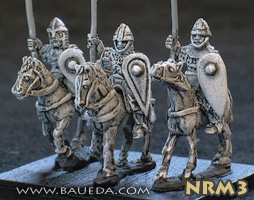 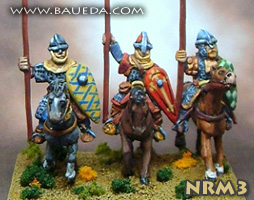 Figures sculpted by M. Campagna Samples painted by Artur |
|
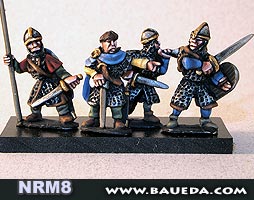 Figures sculpted by M. Campagna Samples painted by Ruben Torregrosa |
|
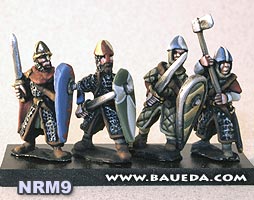 Figures sculpted by M. Campagna Samples painted by Ruben Torregrosa |
|
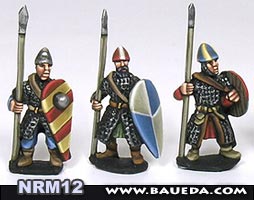 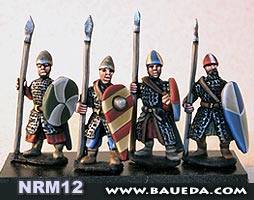 Figures sculpted by M. Campagna Samples painted by Ruben Torregrosa |
|
 Figures sculpted by M. Campagna Samples painted by Ruben Torregrosa |
|
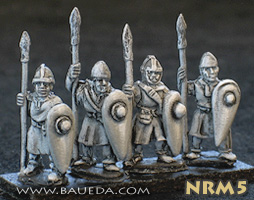 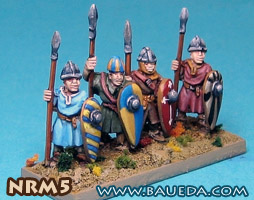 Figures sculpted by M. Campagna Samples painted by Artur |
|
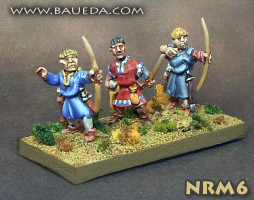 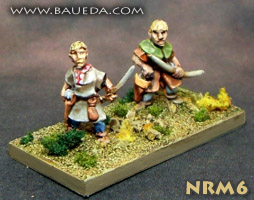 Figures sculpted by M. Campagna Samples painted by Artur |
|
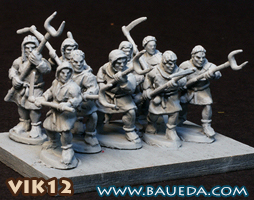 Figures sculpted by C. Berni Painted sample will be available shortly! |
|  |
|
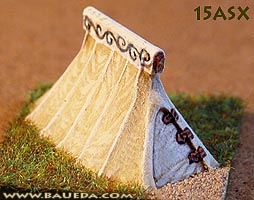 |
|